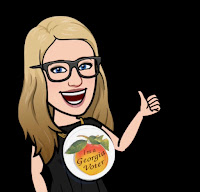Overcoming Voter Suppression
Yesterday, I voted.
Today, I listened to "The Cost to Cast a Ballot" episode of Code Switch. To begin, they talked about the gubernatorial elections in both Georgia and Florida, each of which hold the potential to elect the first Black Governor in the United States: Stacey Abrams and Andrew Gillum, respectively. How exciting that our Georgia election is being discussed on a national level, and that either state could make history depending on the outcome!
Midterm elections generally produce low turnout. Domenico Montanaro, who hosts the NPR Politics podcast, references an expert from the University of Florida who suspects that 45-50% of voters will participate in this election, which would be the highest since the mid-1960s. Presidential elections (like the one in 2016) typically boast about 60% voter participation, and midterms are typically much lower. The 2014 midterm election produced only 36%, which was the lowest since the WWII.
Later in the episode, Gene and Shereen interviewed Carol Anderson, author of the book White Rage. Anderson explained the numerous ways voter suppression has occurred and the impact it has had on our country and on voting since.
 |
| Image Source |
Civil Rights Act of 1957 tried to help, but the process was too lengthy. Finally, in 1965, Lyndon Johnson signed the Voting Rights Act into law. It held states accountable on a national level and prevented them from changing laws without national oversight. Mississippi went from having fewer than 10% of Black residents registered to vote to nearly 60% in the late 60s. Additionally, the state elected its first Black official in 1967- evidence of the impact of the VRA.
Fast forward to the 2000 Presidential election between George W. Bush and Al Gore, where chaos erupted. I remember, at 15 years old, the drama with the ballots in Florida. What I did not know is what happened in Missouri. Nearly 50,000 voters were purged from the rolls. This is not unlike what has happened in Georgia recently, where 53,000 (primarily minority) voters have had their registration blocked and over 850,000 have been purged over the past five years for having not voted in the past two general elections. When my brother voted in Carroll County last week, there was an elderly man next to him who was only just then discovering that his registration had been purged due to inactivity.
Anderson discusses the idea of voter fraud. There have only been 31 cases in fourteen years of voter fraud in which people voted who should not have been allowed. Anderson also explains how voter ID laws, like we have in Georgia (and in 33 other states) disproportionately affect Black and Latino voters.
With the internet and social media, it is increasingly easy to know and understand what will be on your ballot before you even step foot in the polling location. You can find your sample ballot online through your local elections office. Constitutional Amendments and Referendums are two areas that often cause surprise and confusion on the ballot. The wording is typically simultaneously complex and vague and can be difficult to properly interpret. Two resources I came across multiple times and even used as a reference myself are from Wake Up Atlanta and All on Georgia. Partisan organizations usually share break-downs as well, if you have a group that you trust and align with.


Comments
Post a Comment